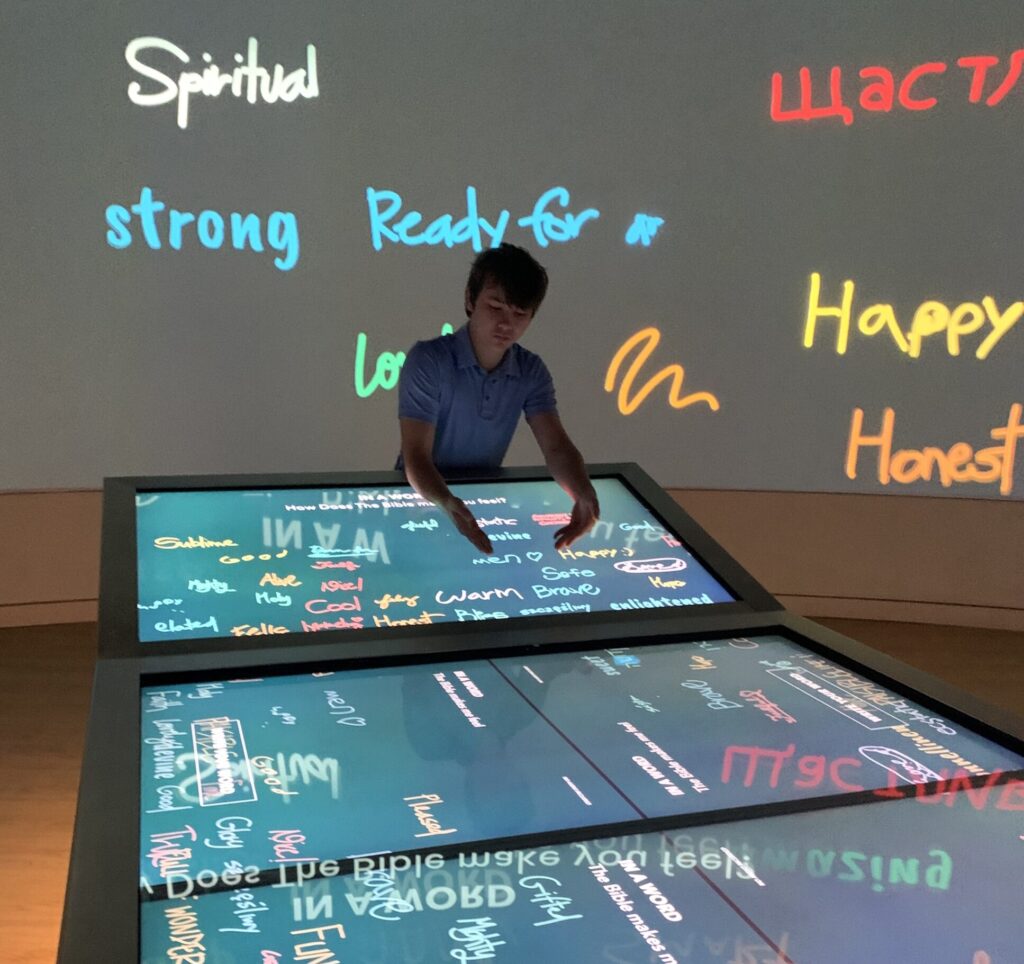We’d heard about the Museum of the Bible (400 4th St SW, Washington, DC) for some time but had never been to it until last weekend, when my daughter’s Sunday school class took a tour of the all-decked-out-for-Christmas center, and the rest of us tagged along. Launching in 2017, the museum is a massive (430,000 square feet), wall-to-wall, multi-media ode to the best-selling book of all time. Let me preface this next comment by saying I am a practicing Catholic and see tremendous value in the Bible as a moral and spiritual guide, with a significant amount of allegory throughout. I had heard it was a very literal take on the Bible (e.g., if you believe Noah really did take two of every kind of animal onto his arc).
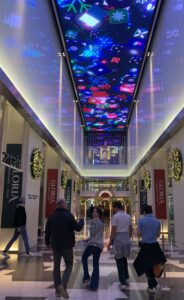 That seemed like a real possibility considering its primary funders were the Green family – owners of the Hobby Lobby retail company and funders of major advertising campaigns focused on God and Christian beliefs, and the National Christian Foundation – American’s biggest Christian charity.
That seemed like a real possibility considering its primary funders were the Green family – owners of the Hobby Lobby retail company and funders of major advertising campaigns focused on God and Christian beliefs, and the National Christian Foundation – American’s biggest Christian charity.
Here are 10 takeaways from our visit:
One: It is a pretty literal take on the Bible. The museum spends a great deal of time covering the history of the various sections of the Bible, the people who are credited with writing books within the book, biblical scriptural references, and the impact of the Bible on aspects of culture and society. There’s not much of an effort to contextualize what Bible passages may have meant to those living at the time they were written vs. now or analyze Bible-inspired behavior that may not be altogether or at-all positive.
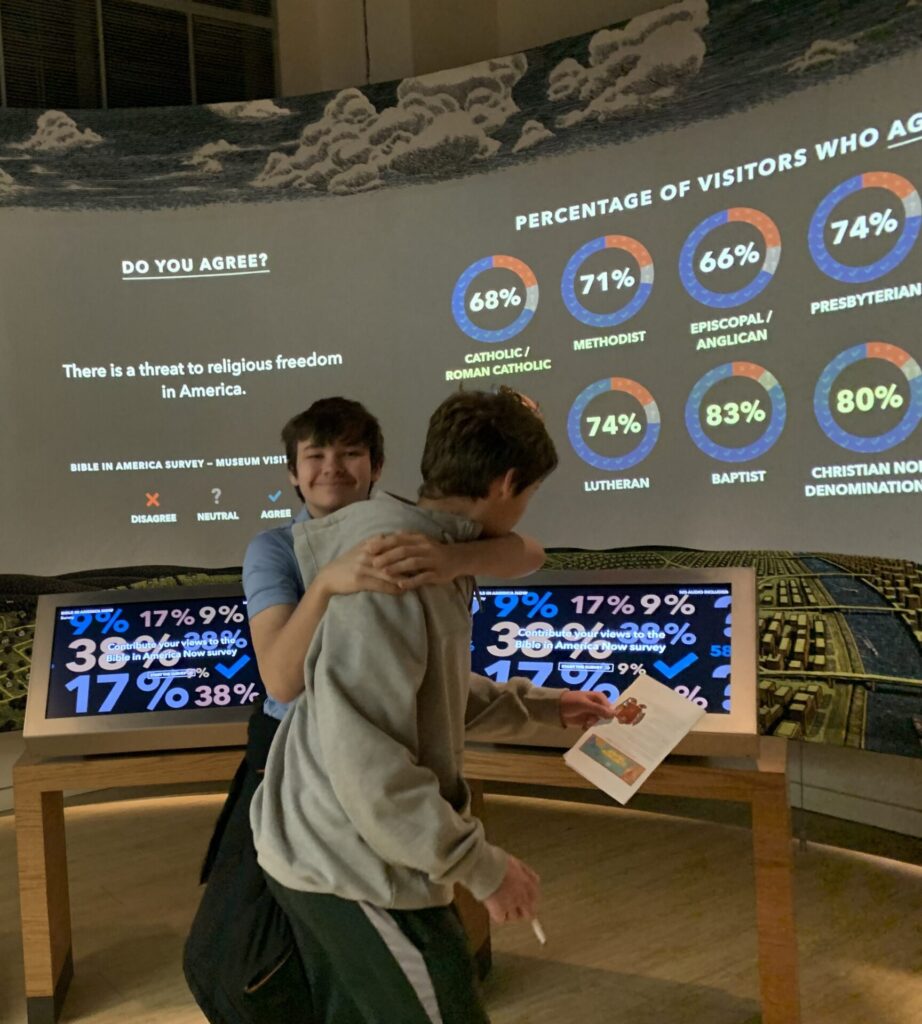
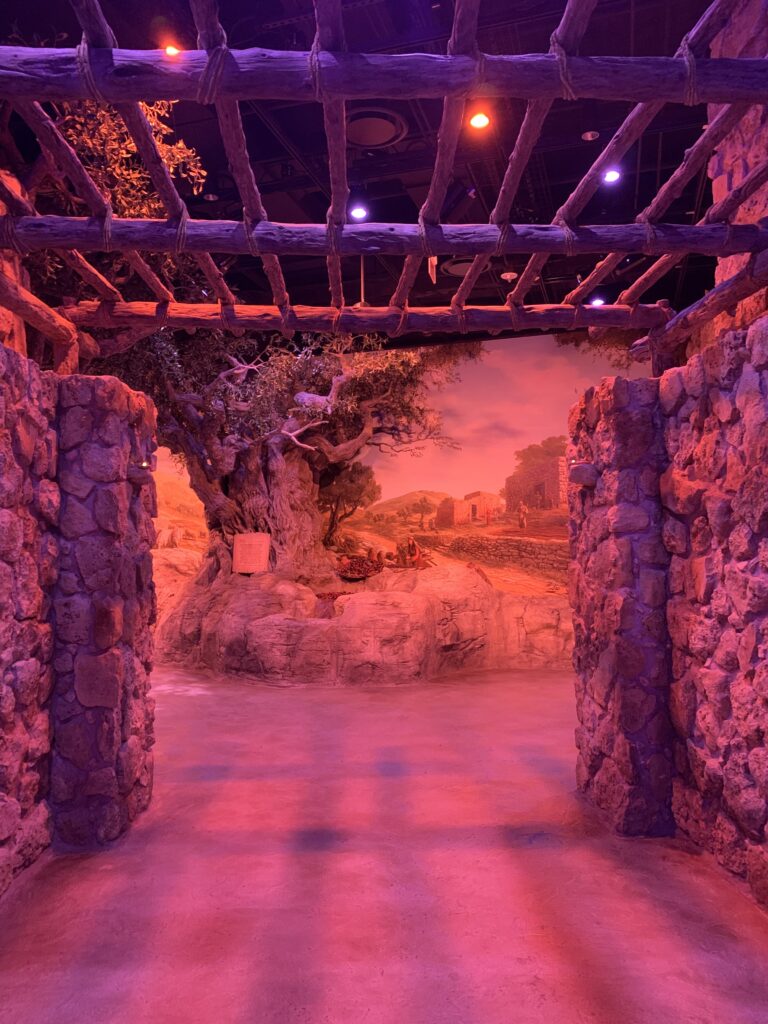
Two: It’s Times Square meets Sunday church service. Or a Disney-inspired Bible study – either way, it’s wall-to-wall Bible on steroids – interactive games and exhibits; the good book brought fully into the mass media age. A life-size walk-through exhibit of parts of Nazareth circa 10 AD, a multi-room floor-to-ceiling video depiction of the creation and passages of the Old Testament, ginormous video displays of floating Bible passages, film viewing, music listening and story recording studios, a Christmas-card picture backdrop of several 10-foot tall pieces of holiday sheet music, and much more.
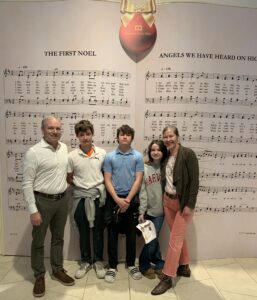
Three: Contemporary in technology but not content. For centuries, the content in the Bible has evoked questions and debate in many forms, from sermons to full-length books, retreats, religious and secular programs, protests, religious schisms and more. It is a book filled with contradictions. But those contradictions and that debate are only passingly referenced in the museum. Which leads us to…
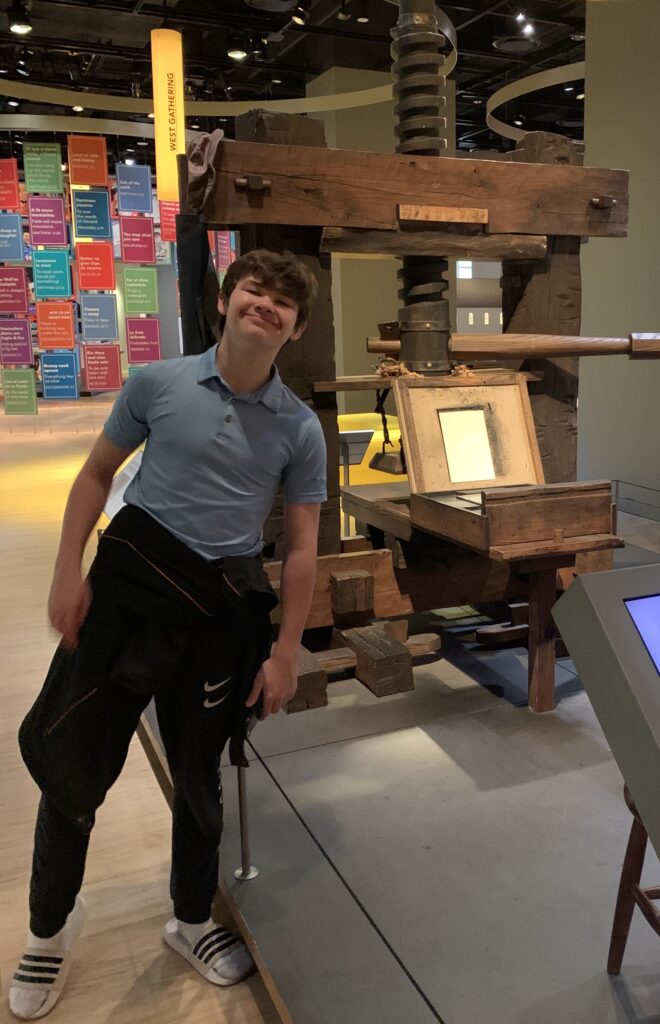
Four: The museum goes to lengths to be noncontroversial. It fills a vast space with exhibits that cover the chronology of the history Bible; the people involved in its stories, writing, and printing – with a stand-alone section on the impact of the Gutenberg printing press on the dissemination of the Bible and its teachings on individuals; verbatim Biblical verses; and the impact of the book on society and aspects of culture. It mentions the banning and burning of books – obviously an issue du jour, but really in the context of these things happening to the Bible years ago. How does it succeed in avoiding controversy on one of the most controversial books of all time?
Five: The museum starts with a neutral position on the Bible and stays there. The basis of that premise is that the Bible is an important book worthy of tremendous gratitude. Period. But as noted at the outset, there are many passages focused on violence, actions (including slavery) condoned in the Bible that are illegal today, and verses that have been purposely misused throughout history to justify bad behavior and misdeeds. That’s also part of the Bible’s story, but it’s not part of the museum.
Six: It takes a westernized view of the Bible. While it does note that there are many different versions of the Bible, published all over the world, the museum itself takes a western view. Case in point – the first portrayal of Jesus, in a stunning Tiffany-produced stained-glass window on the second-floor landing is blonde and blue eyed.
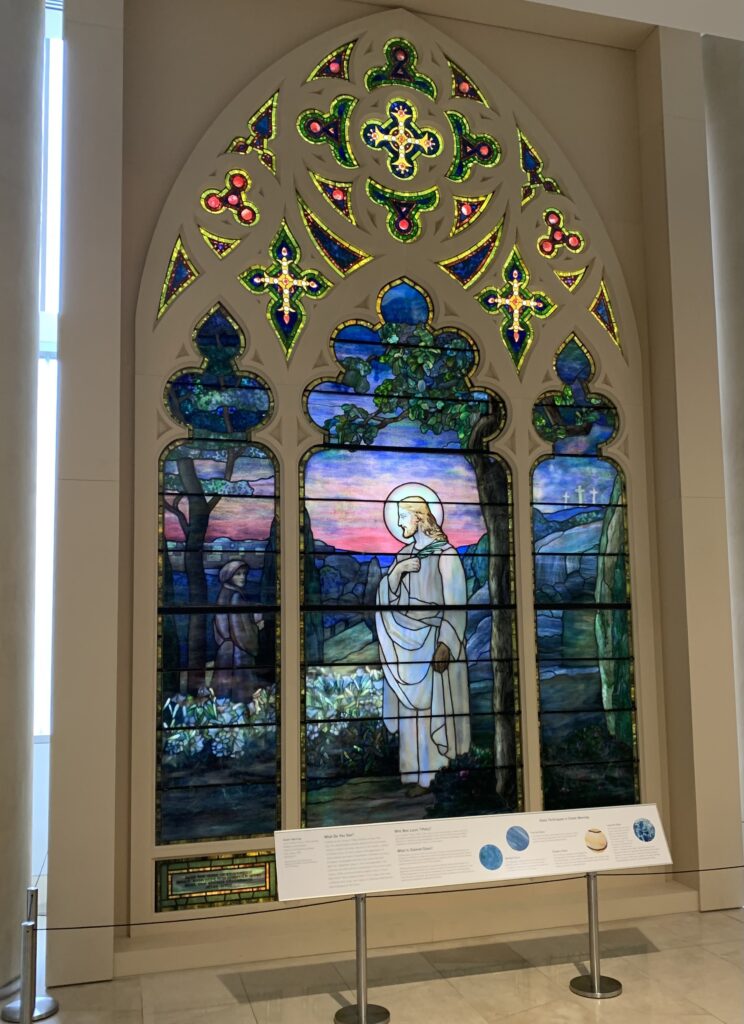
Seven: The museum anticipated visitors of all ages – even teenagers. I don’t mean to diss this museum – it is interesting and all three of my kids really enjoyed it. From the entrance hall – with a dozen four-person Bible trivia game kiosks, to the many videos, films, and other multi-media displays; interactive exhibits – like seeing yourself in a digital Roman soldier shirt or writing the word that most describes how the Bible makes you feel on a digital table that then projects it onto a floor-to-ceiling screen; and the opportunity to walk through a life-size set of Nazareth and ask random questions of indulgent actors in period garb – it’s a good museum choice for neurodiverse and neurotypical kids alike. Here are the reasons why my kiddos gave the Museum of the Bible a thumbs up…
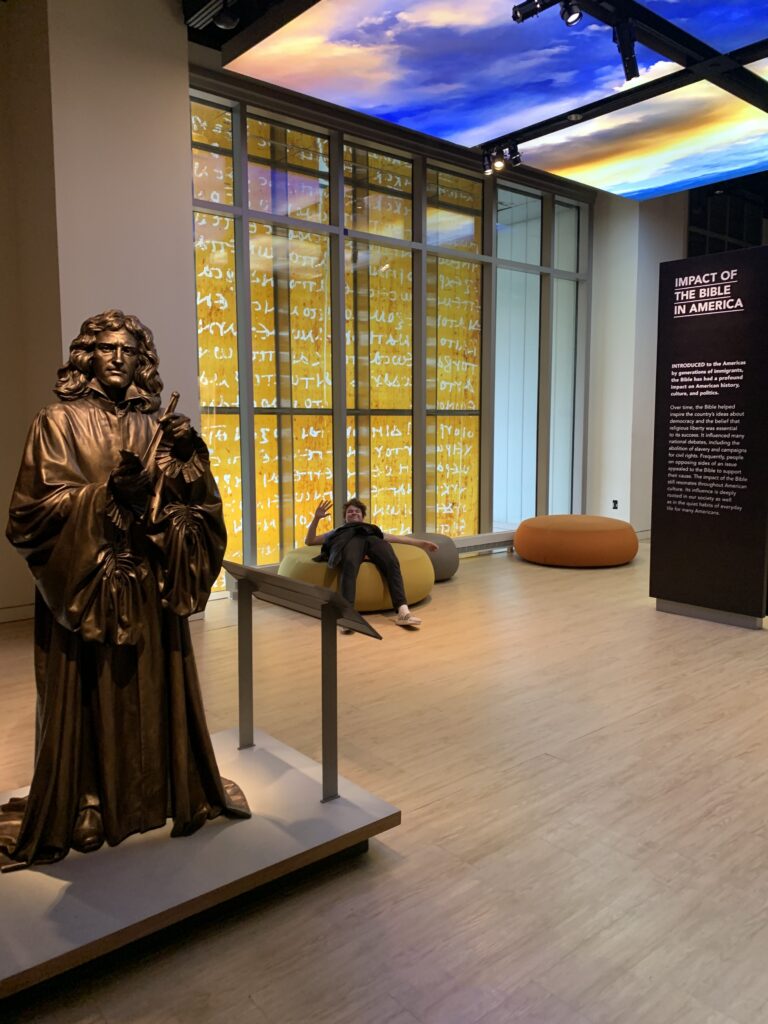
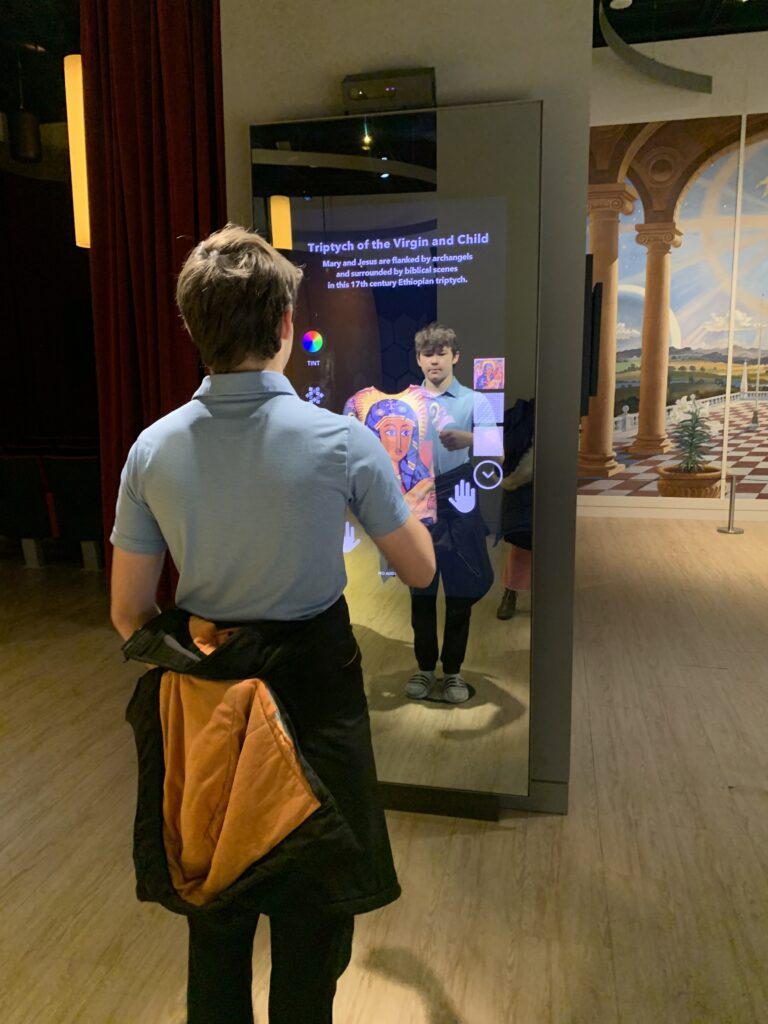
Eight: The New Testament made more sense for me after watching the movie. The third-floor of the museum is dedicated to the stories of the Bible, and Jack particularly enjoyed a video (four times each hour) in the surround-sound New Testament Theater. The story of the New Testament and the spread of the church dramatically unfolds over 12 minutes as it is told by Biblical characters who knew Jesus.
Nine: It was cool and taught you a lot. Emma on the other hand, favored The Hebrew Bible exhibit – also on the third floor, an immersive walk-through experience that focuses on the Old Testament. The 30-minute interactive display focus on well-known Biblical stories such as Noah’s ark, the burning bush, and Passover.

Ten: It felt very interactive and knowledgeable. Jeffrey found and conquered every interactive exhibit in the museum, which took about 2 hours. And then he was ready to go.
With both a café and restaurant onsite, if your kids can hang in there and make it through the provided scavenger hunt (uploaded here – which my kids lost interest in about a quarter of the way through), a family visit to the Museum of the Bible could stretch to three or more hours. And the museum also offers year-round Bible-focused programming for anyone interested in repeat visits.


